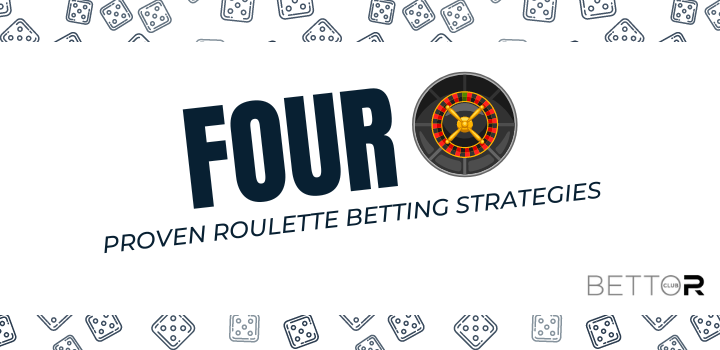Roulette, much like playing the lottery, is a numbers game. There’s really no way to predict when a streak occurs or starts and how and when it may end. Meaning what? You can’t bet for or against any type of trend in the game. That simply means roulette is 100% reliant on luck. The fact that there’s no fool-proof tactics for roulette in over 300 years is the reason why many people question the need for roulette betting strategies. Is there any approach that can improve success in a luck-based endeavor? The answer is actually yes! It may be a game of chance but there are ways to lure fortune one’s way. Let’s look at the most proven of those methods.
1. The Martingale Roulette System
The Martingale betting strategy aims to turn roulette’s core characteristic – being luck-based – to the player’s advantage. In a game of chance, everybody should get lucky sometime. No one’s fate should be so rotten that they would always lose! Here’s a step-wise guide on how to execute the Martingale system:
Seek out a table with a low minimum bet. It also helps if the table allows a reasonably high maximum bet.
Your first bet placed should be the minimum allowed.
If you lose, double the stake on your next bet.
Repeat the process till you win.
The idea is that one should eventually win and, when they do, the bet would be big enough for them to break even on all previous losses. Luck permitting, they might even turn a healthy profit.
2. The Reverse Martingale System
The Reverse Martingale System follows a similar concept as the Martingale System discussed above, but in the opposite way. Rather than doubling down after losses, this time we double down after wins. The idea is to spend more only when you have earned more, and limit the damage when on a losing streak.
3. The D’Alembert Roulette Strategy
The D’Alembert roulette system actually borrows a bit from the Martingale System. The difference is that rather than doubling down the stake, the player’s betting bank is split into “units” which are added when losing. A step-wise guide on the D’Alembert system:
Set aside a reasonable, financially sound budget.
Divide the budget into units. For instance, divide a budget of $1000 into 20 units of $50 each.
Start off your first bet with a single unit of $50.
If the bet is lost, bet with 1+1 units. That would mean a stake of $100 ($50+$50).
When you win, decrease the stake by 1 unit.
4. The Fibonacci System
Those who know their mathematics have heard of Fibonacci, a sequence of numbers with a myriad of applications in modern science. Well it also has a beneficial application to roulette betting as well as many other casino games like blackjack, craps and baccarat. Most importantly, the Fibonacci roulette system is a low risk system that should suit risk-averse gamblers much better than some of the strategies above. Here is how it works:
The player’s first stake is the first number in the sequence. Since the sequence is 0 – 1 – 1 – 2 – 3 – 5 – 8 – 13 – 21 – 34 – 55 – 89 – 144 – 233 – 377 – 610 – 987… that first bet would be $1. The ‘0’ is of course ignored.
If the player wins, they continually bet with the same size of stake.
Should they lose, they bet with a stake corresponding to the next number in the Fibonacci sequence. If the losing streak continues, the player keeps progressing the stake according to the sequence.
When the losing streak breaks, the player goes back two numbers in the sequence.
Should the player end up in profit at any point during the session, they have to return to the beginning of the Fibonacci sequence.
Fibonacci is a negative progression betting system. That means the gambler reduces the size of the stake when winning but increases it when losing. In that sense, it isn’t dissimilar the D’Alembert formula or the Martingale system. The key difference, nonetheless, is that Fibonacci offers a far gentler progression and would therefore lead to more tolerable losses if things went south.

